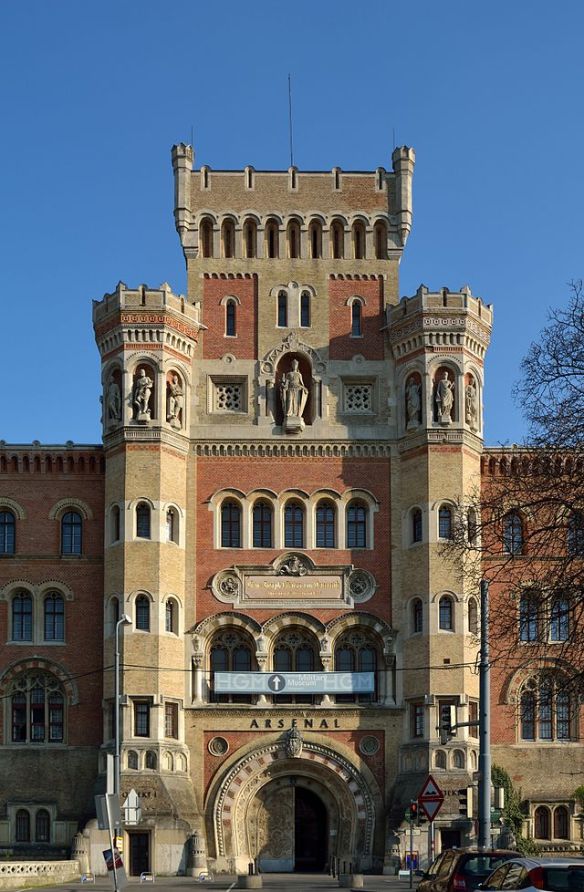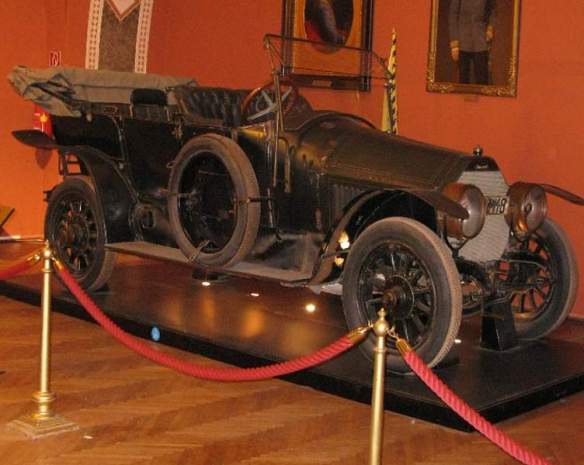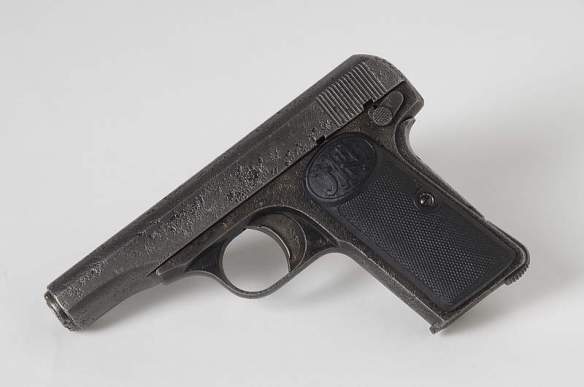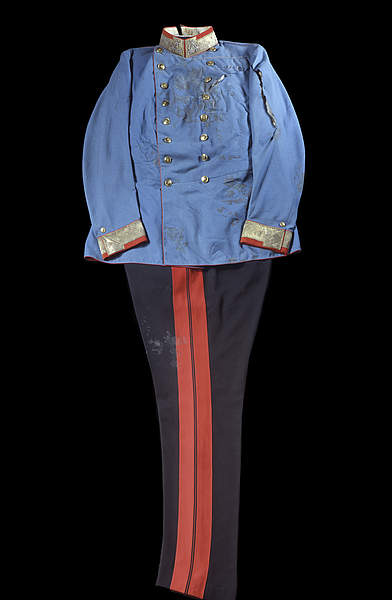In the Landstraße District of Vienna, stands the world’s oldest military history museum, the Heeresgeschichtliches (Museum of Military Museum). The museum’s exhibits focus on Austrian military exploits throughout the centuries. Among the prominent events highlighted are the numerous martial successes of the Habsburgs, one of the great ruling families in European History. Austria and the Habsburgs have a symbiotic relationship, the success and splendor of the latter, influencing that of the former right up to the present day. Yet in the early 20th ,the Habsburgs passed into history. Their fall came in both shocking and sudden fashion. In the space of just four years, the length of World War I, the empire completely disintegrated. First came defeat on the battlefield, followed by unrest and revolt at home. By the end of the war, the Habsburgs and their centuries old monarchy had vanished.

The Heeresgeschichtliches – Museum of Military History in Vienna is located in the city’s former arsenal
The Decline & Fall of the Austrian’s Empire – Revolution, Compromise & Ossification
In truth, decline had been taking place for nearly a century prior to the war. Growing tensions caused by the forces of socialism and nationalism during the 19th century had to be constantly suppressed. Defeat in the Austro-Prussian War of 1866 was a harbinger of the growing power of a soon to be unified Germany. Fear grew, both rational and reasonable, that Austria would be swallowed up by the German Empire. To stave off oblivion the Austrians created an unwieldy alliance with the Hungarians. The upshot of this was a political entity known as the Dual Monarchy (Austro-Hungarian Empire). This helped to stabilize the situation for almost half a century, but at the same time proved to be a constant source of irritation.
The Hungarians demanded almost complete independence. In areas where the two entities were supposed to coordinate, such as Foreign Affairs, disagreements were rife. There were also justifiable concerns about the growth of nationalism among the millions of minorities spread throughout the empire. The Italians of the Tyrol looked to Italy, the Romanians of Transylvania to Romania, the Serbs to Russia and so on. The empire was riven with internal contradictions. Atop it all sat Emperor Franz Josef, a man who would rule for sixty-eight years of revolution, compromise and ossification. Telling the story of a prolonged period of upheaval and transformation via museum exhibits is difficult at best. Perhaps that is why the essence of the fall of the House of Habsburg, Austria-Hungary and the end of old Europe really comes down to one exhibit at the Heeresgeschichtliches. Known as the Sarajevo exhibit, it showcases the residue from the seminal event which changed Austria, the Habsburgs and Europe forever.

1911 Graf & Stift Double Phaeton automobile which the Archduke and his wife were travelling in when they were murdered in Sarajevo (Credit: Heeresgeschichtliches)
Assassination – Politics By Other Means
The largest and most noticeable item on display is an automobile. This was the car in which the Archduke Franz Ferdinand (heir to the Habsburg throne) traveled through Sarajevo with his wife Sophie on Sunday, June 28, 1914. Easily recognizable is the folded back, convertible cover of the 1911 Graf & Stift Double Phaeton automobile. It was at precisely ten minutes past ten o’clock in the morning that a bomb thrown by a would be assassin deflected off the convertible cover. It injured travelers in another vehicle that was part of the Archduke’s entourage. Despite this, the Archduke insisted that the visit continue. He was dutifully taken to the town hall for a reception. Reflecting on this is bound to make the viewer wonder if arrogance, a quality which Franz Ferdinand was known to have in abundance, ended up costing him his life.
Perhaps this not only reflects the arrogance of Franz Ferdinand, but the attitude of the aristocratic order of old Europe as well. The governing elites still had a sense of invulnerability, despite numerous successful assassinations that had occurred across Europe over the past twenty years. Assassination, like war, was politics by another means. The marginalized of the Empire felt that this was the only way real change could be effected. Franz Ferdinand, an elite in every way imaginable, was an extreme example of the will to never change or recognize the obvious, even when it appeared in deadly forms. After the reception, the Archduke and his wife were once again traveling back through Sarajevo, when due to a mix-up, the chauffeur took a wrong turn and ended up stalling the car on a side street. It was then that the assassin, a Bosnian Serb by the name of Gavrilo Princip, pulled out a semi-automatic pistol. From just one and a half meters away he fired two shots. The Archduke was hit in the jugular vein, while his wife was shot in the abdomen.

Fabriue Nationale model 1910 used by Gavrilo Princip to murder the Archduke and his wife (Credit: Heeresgeschichtliches)
The assassin’s pistol, a Fabrique Nationale model 1910, is on display at the museum. It is incredibly humbling to actually see the real weapon. The gun produced the first two shots of what would become a worldwide conflagration that ended up taking the lives of at least ten million people. The exhibit contains several photos of the assassins (including accomplices) along with their weapons. The contrast between the assassins and the royal family is brought home by the photos in close proximity to one another. Here is the scruffy Princip, eyes gazing back at the camera with a fearful, vacant perplexity. Nearby, an image of the royal family shows them as refined and well to do. There could hardly be a greater contrast. Franz Ferdinand and Sophie only met Princip in that one hair trigger moment, but due to that moment they have inextricably linked, forever.

The uniform worn by Archduke Franz Ferdinand when he was assassinated in Sarajevo (Credit: Heeresgeschichtliches)
All & Nothing – Franz Ferdinand’s Famous Last Words
Another display case holds the uniform worn by the archduke on that fateful day. A hole is visible just below the collar where the bullet’s entry occurred. The front of the uniform still displays Franz Ferdinand’s blood stains, which have turned a dirty brown over the years. In a final coup of macabre grace, a chaise lounge is part of the exhibit. It is from the governor’s residence in Sarajevo. On this lounge the Archduke lay, still alive, yet barely breathing. Ten minutes after Sophie died, Franz Ferdinand is said to have uttered, “Sophie, Sophie! Don’t die! Live for our children.” Then he repeated “It is nothing” over and over again.
Those were his final words. The exhibit has the power to transport the viewer beyond the museum, to somewhere deep in the historical consciousness. A place where Franz Ferdinand’s final words, “It is nothing” echo across space and time. Those words have turned into a horrific paradox. They turned out to be quite the opposite of what occurred in the aftermath of the assassination. “It is nothing” was really the beginning of a final endgame for the Habsburgs.
There is nothing quite like the Sarajevo exhibit at the Heeresgeschichtliches. Thousands of artifacts and wonderfully informative displays may tell of the story of the Habsburgs and Austria’s military exploits and defeats, but they pale in comparison to the items showcased from that one day in Sarajevo. The artifacts in the Sarajevo exhibit have the ability to transport the visitor beyond walls and words, beyond facts and dates. Indeed, they speak of a final destiny that defeated an empire and a way of life.
